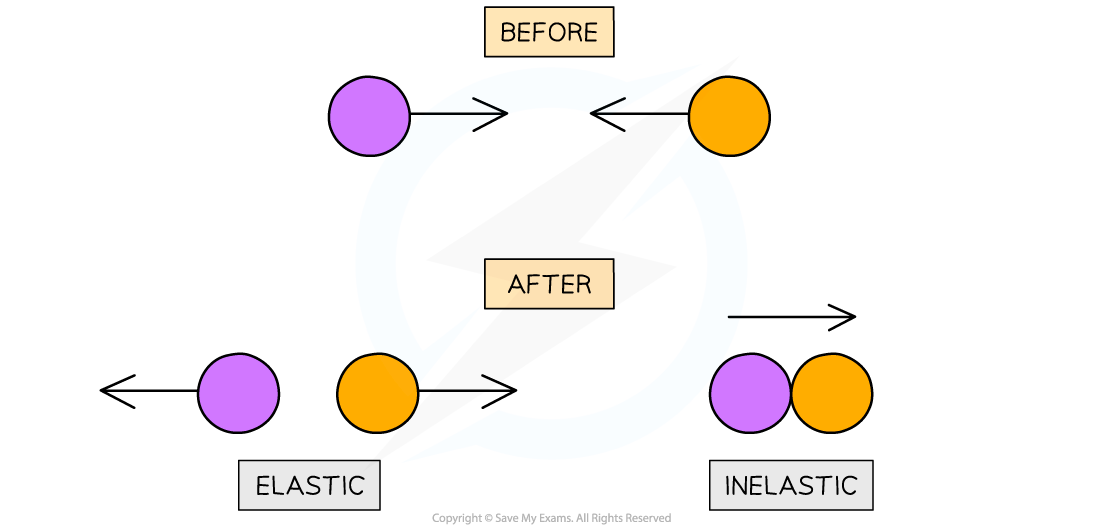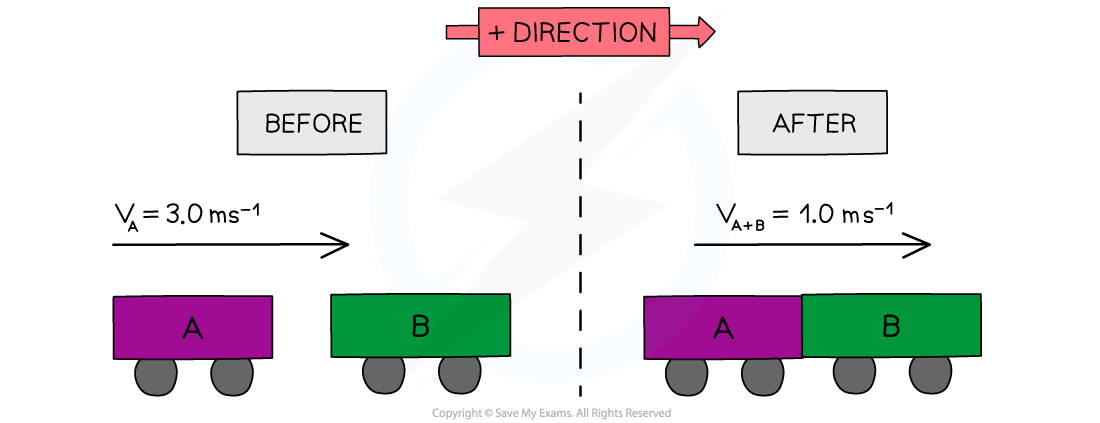Collisions & Explosions in One-Dimension
- In both collisions and explosions, momentum is always conserved
- However, kinetic energy might not always be
Elastic and inelastic collisions
- Collisions are when two or more moving objects come together and exert a force on one another for a relatively short time
- Explosions are when two or more objects that are initially at rest are propelled apart from one another
- Collisions and explosions are either:
- Elastic – if the kinetic energy is conserved
- Inelastic – if the kinetic energy is not conserved
- A perfectly elastic collision is an idealised situation that does not actually occur everyday life
- Perfectly elastic collisions do occur commonly between particles
- All collisions occurring on a macroscopic level are inelastic collisions
- However, exam questions can use the theoretical idea of an elastic collision on a macroscopic level
- A totally inelastic collision is a special case of an inelastic collision where the colliding bodies stick together and move as one body
- In a totally inelastic collision, the maximum amount of kinetic energy is transferred away from the moving bodies and is dissipated to the surroundings

Elastic collisions are where two objects move in opposite directions. Inelastic collisions are where two objects stick together
- An explosion is commonly to do with recoil
- For example, a gun recoiling after shooting a bullet or an unstable nucleus emitting an alpha particle and a daughter nucleus
- To find out whether a collision is elastic or inelastic, compare the kinetic energy before and after the collision
- The equation for kinetic energy is:
- Where:
- Ek = kinetic energy (J)
- m = mass (kg)
- v = velocity (m s–1)
Examiner Tip
It can be helpful to think about collisions and explosions as if there are four types rather than two:
- elastic - kinetic energy conserved
- perfectly elastic - kinetic energy conserved and no energy transferred between objects
- inelastic - kinetic energy not conserved
- totally inelastic - kinetic energy not conserved and maximum energy transferred to surroundings
Worked example
Two similar spheres, each of mass m and velocity v are travelling towards each other. The spheres have a head-on elastic collision.
What is the total kinetic energy after the impact?

Worked example
Trolley A of mass 0.80 kg collides head-on with stationary trolley B at speed 3.0 m s–1. Trolley B has twice the mass of trolley A. The trolleys stick together and travel at a velocity of 1.0 m s–1.
Determine whether this is an elastic or inelastic collision.


Examiner Tip
If an object is stationary or at rest, its initial velocity is 0, therefore, the momentum and kinetic energy are also equal to 0.
When a collision occurs in which two objects are stuck together, treat the final object as a single object with a mass equal to the sum of the masses of the two individual objects.
Despite velocity being a vector, kinetic energy is a scalar quantity and therefore will never include a minus sign - this is because in the kinetic energy formula, mass is scalar and the v2 will always give a positive value whether it's a negative or positive velocity.

